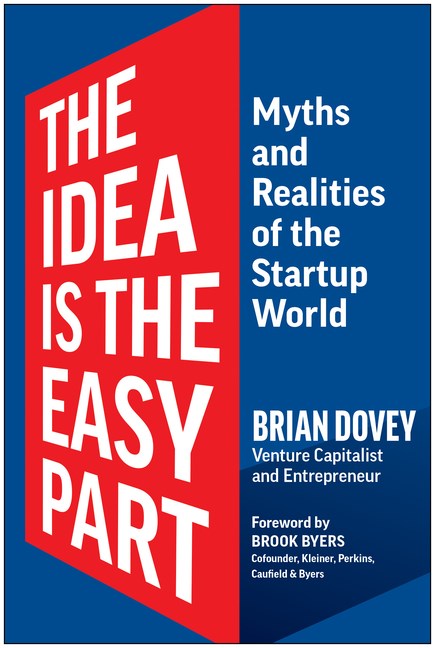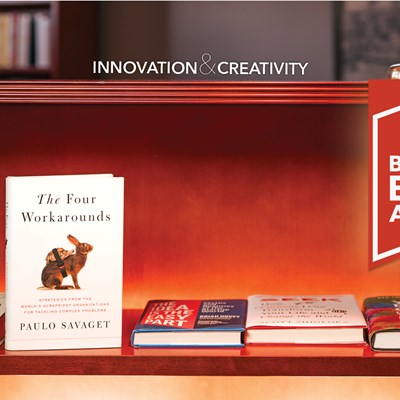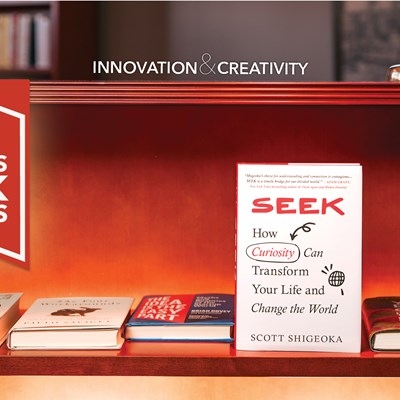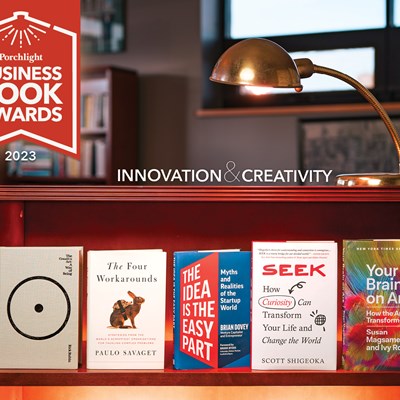The Idea Is the Easy Part | An Excerpt from the Innovation & Creativity Category
December 28, 2023
Venture capitalist Brian Dovey draws from decades of experience to offer guidance and perspective for innovators seeking to join the startup world.
As Porchlight's Creative Director Gabbi Cisneros writes:
We all know an Ideas Person: someone with all the energy to start but whose interest wanes when success isn’t immediate. But maybe it’s not so much a lack of energy or interest, and more of a lack of knowledge of what to expect, what routes are available, and how to handle the challenges that arise along the way. In less than 300 pages, The Idea is the Easy Part by Brian Dovey uses examples of the many roadblocks, bumps, and dead ends that other start-ups have encountered to help your business overcome or avoid the same obstacles.
In this excerpt, Brian Dovey reassures aspiring entrepreneurs that they already possess the necessary skills to overcome startup challenges and make a positive impact in the world.

When I was a student at Harvard Business School in the late 1960s, there was only one course on entrepreneurship, called “Management of New Enterprises.”
The word “entrepreneur” wasn’t even in the course title because it carried a negative connotation. Several of my professors said Harvard’s mission was to train the future leaders of the Fortune 500, not the heads of trivial little businesses. This perspective was so pervasive that I remained reluctant to call myself an entrepreneur for many years, even after I pivoted from the corporate world to the startup world.
Today, by contrast, Harvard Business School offers at least two dozen courses about startups and requires all MBA students to study entrepreneurship, as do most business schools. Many high schools also offer classes on the subject. Is it any surprise that many of our brightest students want to launch their own businesses someday? Startup founders have become rock stars. Numerous books about the likes of Steve Jobs, Jeff Bezos, and Elon Musk are bestsellers, as are the memoirs of icons like Phil Knight and Richard Branson. As entrepreneurship has evolved from a small niche to the white-hot center of capitalism, an elaborate mystique and mythology has built up around it.
But those books, as well as movies like The Social Network and TV shows like Shark Tank, make terrible how-to guides to achieving fame and fortune. Most memoirs, movies, and reality shows about founders are heavily fictionalized to attract the widest possible audiences. I’m not saying you shouldn’t enjoy them, merely that you can’t treat them like a road map. For instance, they often make it seem like it’s possible to get immediate funding for a startup with a big idea and a slick, five-minute elevator pitch. And they imply that once you get funding, you’re already on the twenty-yard line, on the verge of a touchdown. In reality, getting funding is incredibly hard, and even then you’re on your own twenty-yard line, with eighty yards still to go. Real success is in making the company self-sustaining.
Although there has never been more content available about startups, much of it is misleading and does a poor job of explaining why they fail or succeed. My goal for this book is to help you, an aspiring (or potentially aspiring) entrepreneur, understand the reality of what you might be getting into and how to navigate this strange world. After decades as a startup leader, big-company executive, and venture capitalist, I’ve pretty much seen it all. Now I want to share my hard-won insights, advice, and relevant stories with people like you.
The mystique of entrepreneurship isn’t entirely positive, of course. Many of the college students I meet hold negative stereotypes about startup life. Some media depictions imply that starting a business requires a complete lack of empathy and a relentless drive to step on, or at least step over, other people to get what you want. In reality, most of the successful entrepreneurs I’ve worked with are honest and ethical. They just aren’t interested in attracting media attention the way a ruthless minority of founders often do.
This book is aiming for the sweet spot between starry-eyed optimism and dour negativity. If you’ve been seduced by fantasies about an easy path to fame and fortune, I’ll try to bring you back down to earth. But if you’re skeptical about your qualifications to start and run a company, I’ll try to reassure you that you probably already have the skills you need and that you can do a lot of good for the world as an entrepreneur.
THE IDEA IS THE EASY PART
The biggest and most damaging myth of the startup world is that a successful startup requires an innovative new product or service: it’s all about the big idea! Every business experience I’ve ever had points to the opposite: the idea is the easy part! You can have a brilliant innovation that leads to an unsustainable business or a boring, commonplace idea that drives a fantastic business. Much of this book will be about all the factors other than your idea that will make or break your startup, and all the essential questions and challenges that first-time entrepreneurs tend to overlook.
New entrepreneurs usually equate the value of a startup with the “wow factor” of its innovation. It’s true that some massively successful startups, such as Tesla and Google, were founded on genuinely significant technological breakthroughs, but those are a small minority, and even they didn’t get to where they are on the power of the idea alone. They just happen to get the lion’s share of media coverage and public adulation.
The majority of successful startups, in contrast, integrate previously existing ideas in new ways rather than inventing something utterly original. It’s an approach I call “some assembly required,” as you’ll see in the chapter on choosing opportunities. Often, a relatively small twist on a previously existing business model can lead to big success. For instance, Facebook wasn’t the first social-media platform, but it was the first that required users to use their real identity, which changed the experience. Instagram wasn’t the first service for sharing photos online, but it was the first to offer filters and make sharing fun and social. Dollar Shave Club became a billion-dollar business without a single technological breakthrough. And what was Starbucks at first but a chain of expensive coffee shops that didn’t offer table service but introduced exotic (at the time) espressos and lattes?
One of my favorite examples is Zappos, the online shoe retailer. Not only did founder Tony Hsieh not have a great idea—he didn’t even have a good idea! Letting customers order five pairs of shoes, try them on at home, and then ship back four of them for free? Those high costs made the business model terrible, and despite strong growth, the company was barely profitable before it was acquired by Amazon.
Sometimes breakthrough ideas can even have a negative impact. One company that we started and funded at Domain used a cutting-edge technology to insert human genes into mice. That was a real innovation, and we were smitten by the science, but we searched in vain for a viable business to apply it. We tried to develop a testing laboratory for new products that used “humanized mice,” but it didn’t get off the ground because the current methods of animal testing were too entrenched. We then pivoted to trying to use the technology to grow new organs. That also didn’t work—too many differences between mice and men.
Beyond your idea, the team you hire and manage will also be a make-or-break factor in your startup’s success. So will your effectiveness at raising capital and executing through tough challenges, as we’ll see in the chapters ahead. A great way to lose money is to say, “This idea is so good that even with idiots in charge, we can’t possibly lose money.”
Excerpted from The Idea Is the Easy Part: Myths and Realities of the Startup World. Copyright © 2023 by Brian Dovey. All rights reserved.









